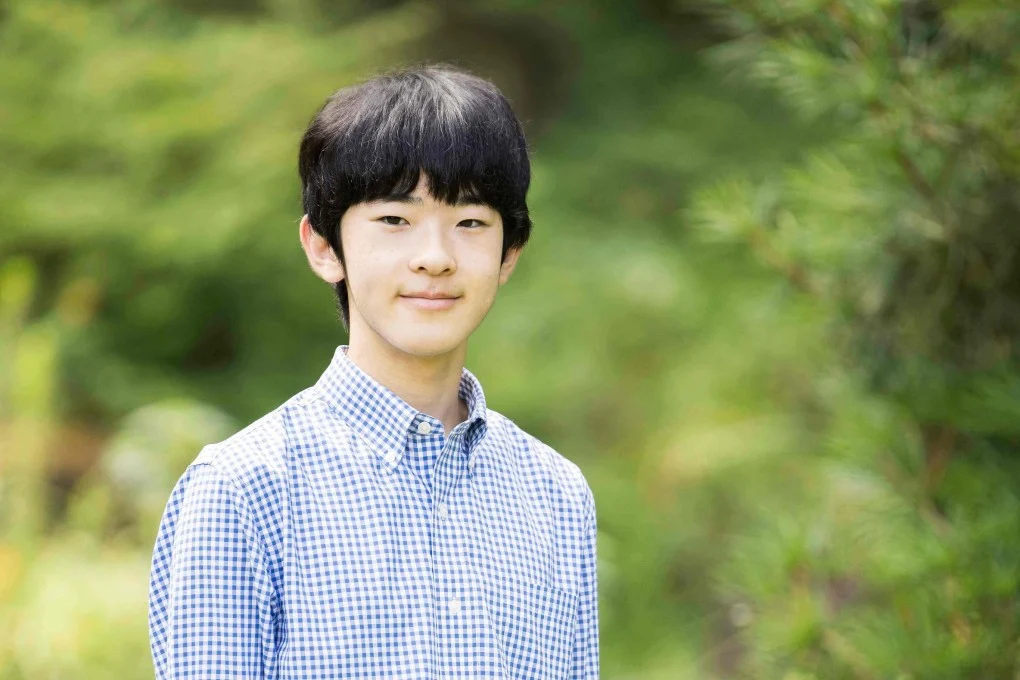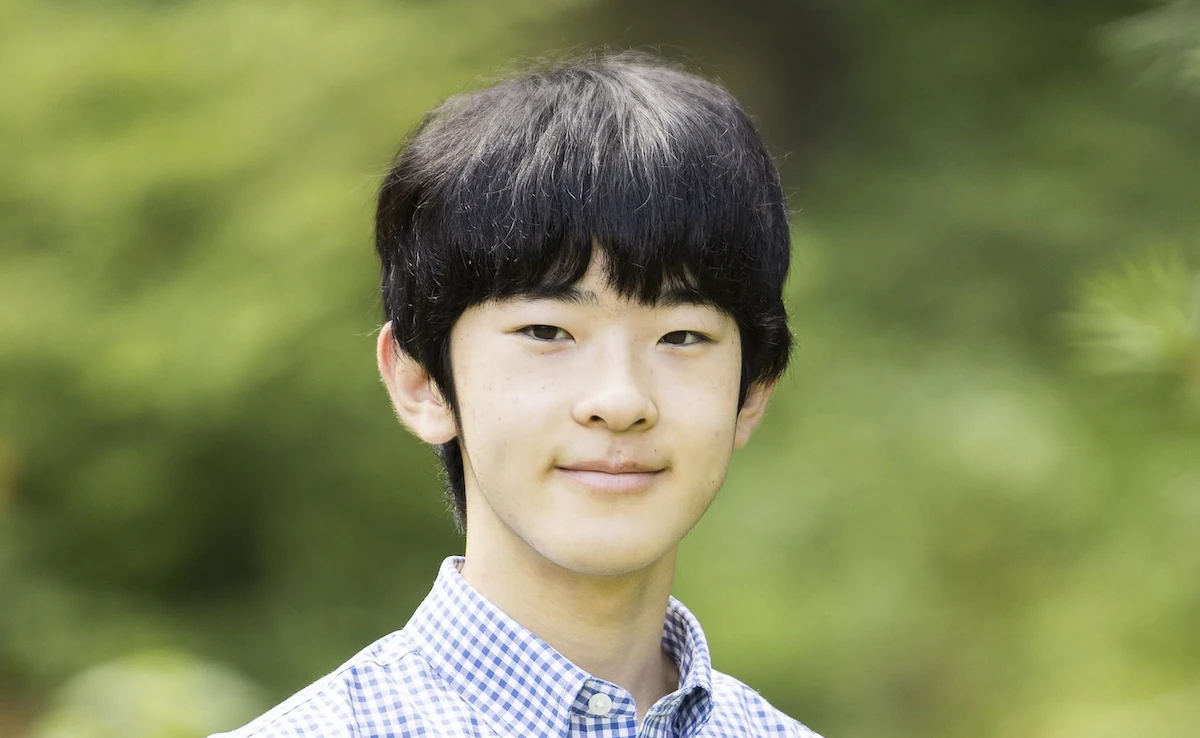Prince Hisahito has reached a significant milestone in Japan’s royal history, becoming the first male member of the Japanese imperial family to turn 18 in nearly four decades. Hisahito, born in 2006, is the son of Crown Prince Akishino and the nephew of Emperor Naruhito.
As the youngest member of Japan’s 17-member imperial family, Prince Hisahito’s adulthood marks a pivotal moment, as he is now the only heir apparent eligible to one day assume the Chrysanthemum Throne under Japan’s strict male-only succession laws.
The fact that Prince Hisahito has reached this milestone highlights the challenges facing Japan’s royal family in a country grappling with a rapidly aging population and declining birth rates. The Japanese imperial family, which has ruled for more than a millennium, now faces the same demographic issues as the rest of the nation.
This issue is compounded by the male-only succession law, which prohibits women from ascending to the throne and forces female members who marry commoners to lose their royal status. Prince Hisahito’s adulthood has rekindled debates about the future of the royal family and how Japan can maintain a stable line of succession.
As Prince Hisahito enters adulthood, he carries the weight of responsibility for preserving Japan’s imperial lineage. His father, Crown Prince Akishino, was the last male royal to turn 18, doing so in 1985.
Prince Hisahito’s rise to adulthood comes at a time when there are only four male members remaining in the imperial family, including Emperor Naruhito, Crown Prince Akishino, and the emperor’s uncle, Prince Hitachi.
This dwindling number of male royals has heightened concerns about the future of Japan’s monarchy, especially with the strict male-only succession law in place.
Prince Hisahito :

The 1947 Imperial House Law, which governs Japan’s monarchy, only allows male descendants to ascend to the throne. This law has been heavily criticized in recent years, particularly after the birth of Emperor Naruhito’s only child, Princess Aiko.
Princess Aiko, born in 2001, is widely admired by the Japanese public, and many have called for her to be considered as a future empress.
However, the law forbids her from taking the throne, despite being a direct descendant of the emperor. The birth of Prince Hisahito in 2006 put an end to early discussions of allowing an empress to rule, as his birth provided a male heir to the throne.
Despite his royal status, Prince Hisahito has expressed a desire to enjoy his remaining time in high school. In a statement, Prince Hisahito shared that he cherishes his time in school and has a keen interest in the natural world, particularly insects.
He has even co-authored an academic paper on a survey of dragonflies conducted on the grounds of his family’s Akasaka estate in Tokyo. This blend of academic interest and royal responsibility underscores the complex role that Prince Hisahito must now navigate as he prepares for his future role as emperor.
The challenges facing Prince Hisahito and the royal family are closely tied to Japan’s population crisis. As the nation experiences one of the fastest-aging populations in the world and a shrinking birth rate, the number of eligible heirs within the imperial family continues to decline.
With only four men left in the 17-member imperial family, the pressure to maintain a stable line of succession has intensified. Prince Hisahito’s status as the only male heir apparent raises serious concerns about the future of the monarchy, especially if Japan continues to uphold the male-only succession law.
The conservative nature of Japan’s imperial system is reflected in the reluctance to change the succession law. In 2022, a government-commissioned panel of experts recommended that female members of the royal family be allowed to retain their royal status after marriage as a potential solution to the declining number of eligible heirs.
The panel also suggested adopting male descendants from now-defunct royal families to continue the male lineage through distant relatives. However, critics argue that these measures would have limited effectiveness, as the male-only succession system has its roots in pre-modern practices, which often relied on concubines to produce heirs.
As Prince Hisahito assumes a more prominent role in the imperial family, his future will be closely watched by both the public and government officials.
The strict male-only succession system, while preserving traditional family values, may no longer be practical in modern Japan, particularly as the country grapples with its demographic challenges. Critics of the system have long argued that the exclusion of women from the line of succession weakens the monarchy’s ability to adapt to contemporary realities.
Prince Hisahito’s adulthood brings with it renewed debates about the future of Japan’s monarchy. While the imperial family has been a symbol of continuity and tradition for more than a thousand years, the question of how to maintain the stability of the throne looms large.
The government continues to explore ways to address the declining number of eligible male heirs, but any major changes to the succession law would require significant political and societal support.
The public’s admiration for Princess Aiko adds another layer of complexity to the discussion. Many believe that she would make an excellent empress, given her intelligence, education, and direct descent from Emperor Naruhito.
However, as long as the male-only succession law remains in place, Princess Aiko will remain ineligible to take the throne. This has led to frustration among those who believe that Japan’s imperial system should evolve to reflect the changing role of women in society.
As Prince Hisahito continues his education and prepares for his eventual role as emperor, the royal family’s future hangs in the balance. His adulthood represents both an opportunity and a challenge for Japan’s monarchy.
While he provides a much-needed male heir to the throne, his status as the last heir apparent highlights the urgent need for reform within the imperial system. Whether the government will take steps to address these concerns remains to be seen, but one thing is certain: Prince Hisahito’s future is intertwined with the fate of Japan’s monarchy.
Prince Hisahito’s 18th birthday is a significant milestone for Japan’s imperial family. As the first male royal to reach adulthood in 40 years, he carries the hopes of maintaining the Chrysanthemum Throne.
However, his adulthood also brings to light the challenges of a monarchy bound by a male-only succession law in a nation facing a population crisis. As discussions about reform continue, Prince Hisahito’s journey toward the throne will be closely watched, both by those who support tradition and those who advocate for change.
let’s enjoy few years on earth with peace and happiness….✍🏼🙏

